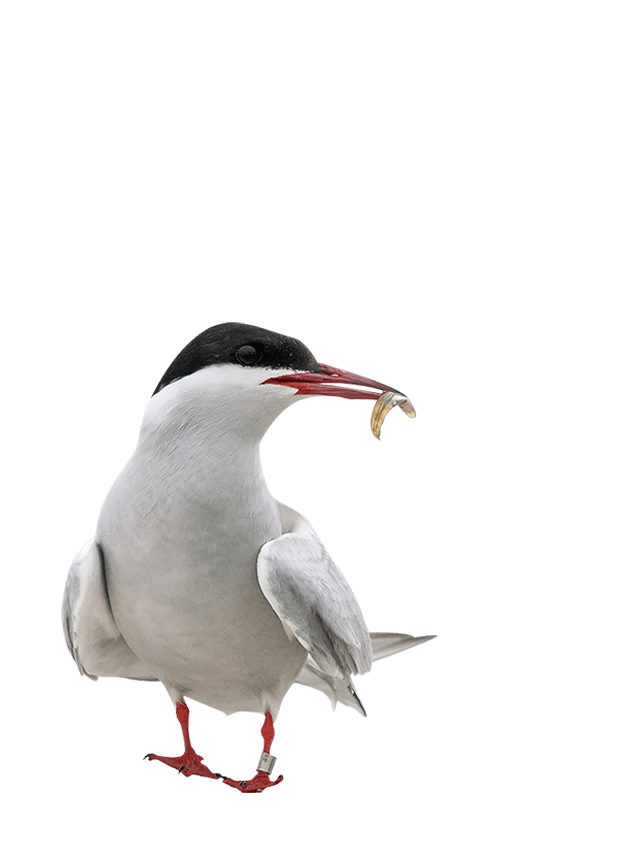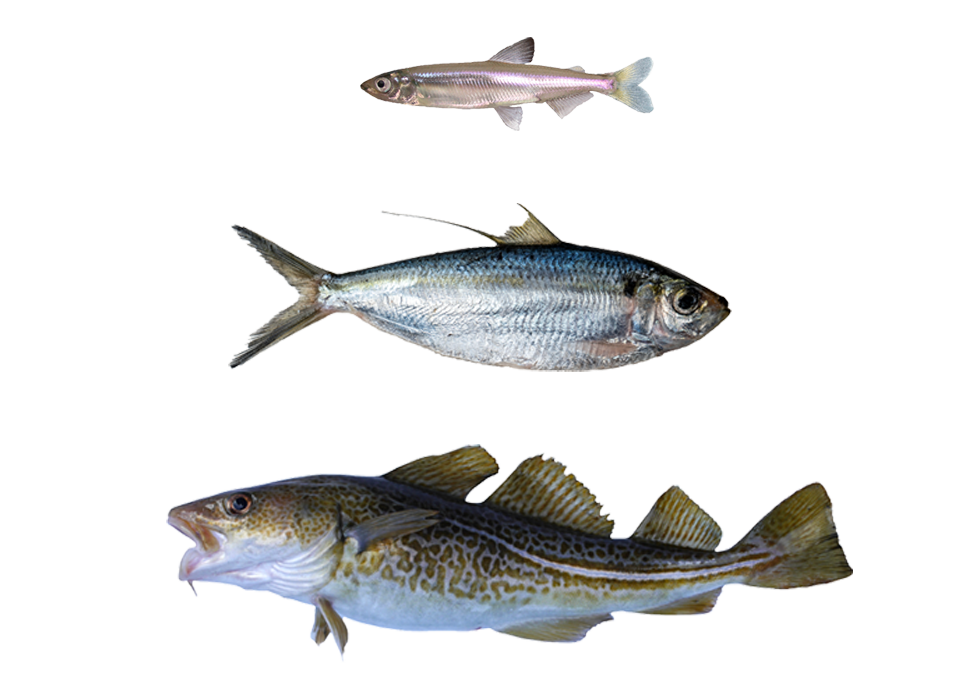Pole to Pole

Welcome to the Arctic tern's world!
On the exterior, the tern is a relatively simple and typical bird.

They have quite a few "normal" characteristics - they mate for life and eat small fish and crustaceans.

From top to bottom: smelt, herring, and cod.
But, the Arctic tern is far from normal.
The Arctic tern has the longest migration of any other living thing on Earth.
This chart shows just how far the tern travels.
This long journey ensures that they see two summers every year and more daylight than any other creature on the planet.
Following the Summer Sun
The Arctic tern migrates 44,000 miles roundtrip every year.
From May to mid-August, they breed near the Arctic Circle in upper Canada, Greenland, and Iceland.
Come August, they start their migration south towards Antarctica.
These points show an example southward journey from Alaska.
This endeavor will take them through every climate zone on Earth.
When they reach the tip of South America and Antarctica in November, they rest here until they start their migration north.
While they breed on land in the northern hemisphere, much of their non-breeding range is located on sea ice.
The ability to feed in their Antarctic wintering is dependent on sea ice cover.
The terns follow a convoluted course in order to take advantage of prevailing wind.
These points show an example course they take northward.
These journies require the terns to navigate uncertain wind speeds and patterns.
This map shows real-time wind conditions that terns are currently navigating.
Enable the interaction to view the tern's forecast!

To understand the brevity of this migration, we'll follow the journey of single tracked bird.

The Journey
This particular tern was breeding in Unalaska, Alaska.
She traversed broadly around the Alaskan coast.
Unalaska is a beautiful, mountainous town that is ripe with food.
To begin the migration, she swoops down along the coast of the Pacific Northwest.
She travels down through the North Pacific Ocean.
Farther...
Farther.....
Soon, she is approaching land. Eureka, Oregon is in her sightline.
Oregon's coasts boast magnificent locales to rest and hunt for fish.
The journey is far from over, however.
The tern begins traveling along the Californian coast.
She's headed for Mexico.
Down she travels still...
Down....
Down.....
Down......
She's finally reached the coast of Ecuador!
In Quito, the space is lively and tall. It is a respite from the open waters.
The little tern still has a bit more to go.
Her migration is almost over.
At this point, she's traveled over 20,000 miles.
This has taken her less than a month.
She's almost there!
Soon, she will be able to rest.
Now, she's reached the end of south America and the Antarctican sea ice.
While solitary and desolate to humans, this landscape provides a peaceful area for the tern to recooperate, until the next migration north.

As such a trailblazer and emboldened migration icon, the tern may seem untouchable at times.

But, they are haunted by the same demon as all of us:

Our changing climate.
As mentioned, the terns depend on sea ice to feed and survive in Antarctica during this segment of their migration.
This sea ice has changed tremendously over the decades.
This is the area of sea ice in 1979. While it has ebbed and flowed yearly, the area has decreased enormously.
Sea ice in 1985
Sea ice in 1990
Sea ice in 1995
Sea ice in 2000
Sea ice in 2005
Sea ice in 2010
Sea ice in 2015
Sea ice in 2020
Sea ice in 2025
Because they don't breed in the Anarctic, they are able to move to a different area if necessary.
Still, their numbers are reducing, and a lack of food compounds the shrinking sea ice.

Despite this adversity, the tern trudges onward.
They measure their lives not in years, but in summers - thirty of them, spent in tireless pursuit of the sun.
For the tern, there is always another journey on the horizon.

Created by Sophie Michalski on 8.24.2025
Sources
Movebank
DataZone by BirdLife
GloH20
Köppen climate classification
NOAA@NSIDC
IUCN Red List
National Audubon Society
eBird